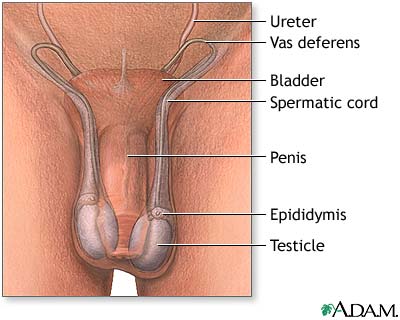Treatment
Surgery is usually required and should be performed as soon as possible after symptoms begin. If surgery is performed within 6 hours, most testicles can be saved.
During surgery, the testicle on the other (non-affected) side is usually also anchored as a preventive measure. This is because the non-affected testicle is at risk of testicular torsion in the future.
Prognosis (Expectations)
If the condition is diagnosed quickly and immediately corrected, the testicle may continue to function properly. After 6 hours of torsion (impaired blood flow), the likelihood that the testicle will need to be removed increases. However, even with less than 6 hours of torsion, the testicle may lose its ability to function.
Complications
If the blood supply is cut off to the testicle for a prolonged period of time, it may atrophy (shrink) and need to be surgically removed. Atrophy of the testicle may occur days-to-months after the torsion has been corrected. Severe infection of the testicle and scrotum is also possible if the blood flow is restricted for a prolonged period.
Calling Your Health Care Provider
Go to the emergency room or call the local emergency number (such as 911) if testicular torsion symptoms occur.
Pictures & Images
Testicular torsion repair – seriesNormal anatomy
-
Testicular torsion: Overview, Causes
-
Testicular torsion: Symptoms & Signs, Diagnosis & Tests
-
Testicular torsion: Treatment
Review Date : 9/22/2009
Reviewed By : Linda J. Vorvick, MD, Medical Director, MEDEX Northwest Division of Physician Assistant Studies, University of Washington, School of Medicine; Louis S. Liou, MD, PhD, Assistant Professor of Urology, Department of Surgery, Boston University School of Medicine. Also reviewed by David Zieve, MD, MHA, Medical Director, A.D.A.M., Inc.

